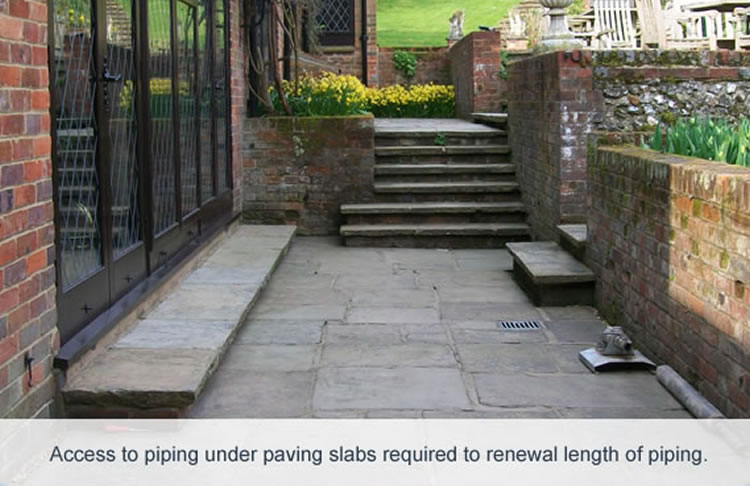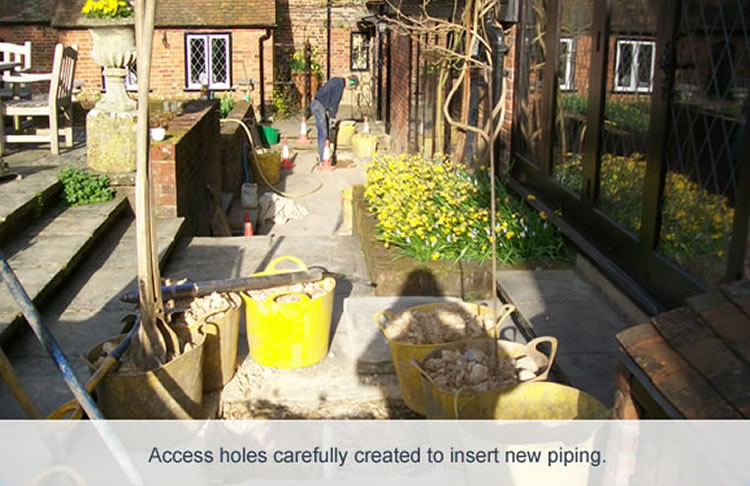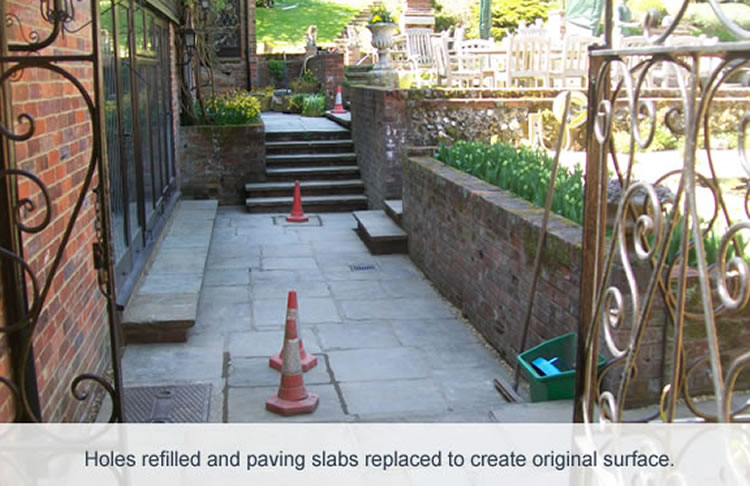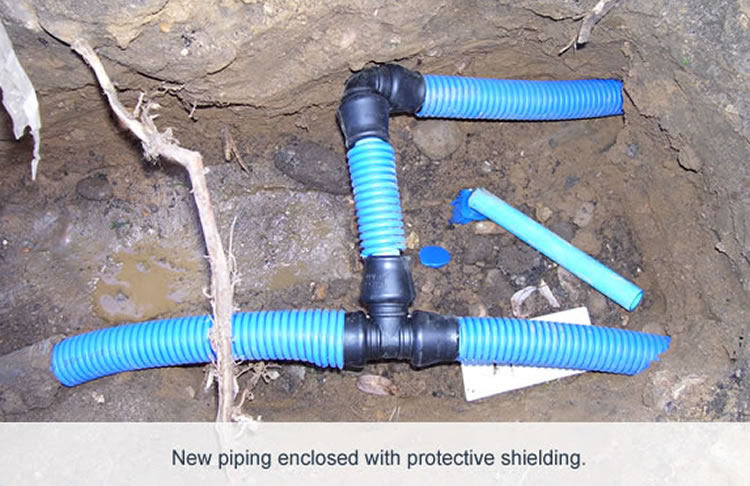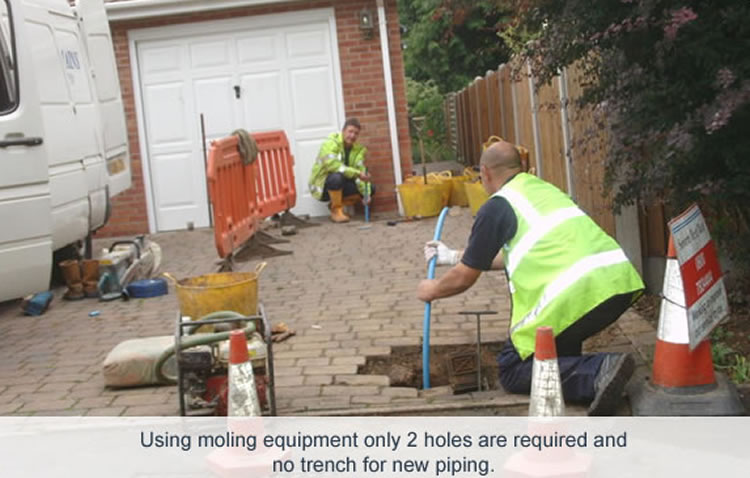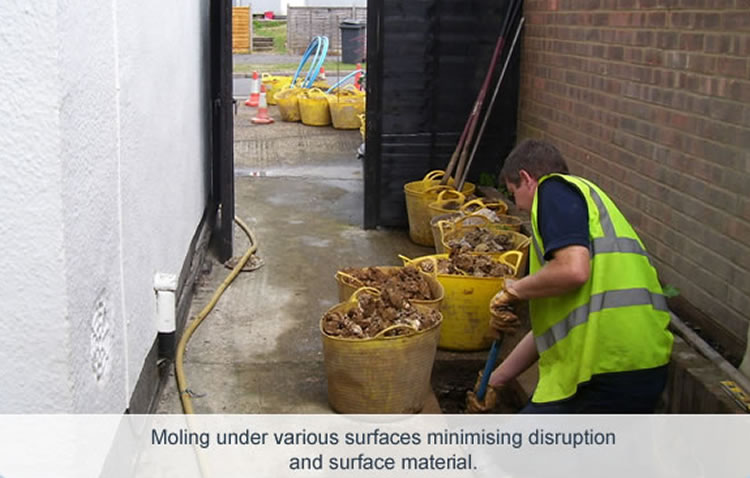Where the water pipe is in poor condition, or the customer elects to have a new mains water replacement supply pipe, our engineers will install a new water mains piping service quickly and with minimum disruption using impact moling wherever possible.
An impact mole is an air-driven device which is launched from a small pit (usually 2.5ft x 1 ft), which punches its way through the ground to a receiving pit.
The soil is compacted outwards to create a smooth, almost glazed, bore which allows a pipe to be installed quickly, without an unsightly trench. Apart from the small launch/receive pits, there is very little disruption!
As with water mains repairs, our engineers take great care to protect surrounding surfaces, by placing excavated spoil on ground sheets or in containers.

The new replacement water pipe sits loosely inside the smooth bore; where the pipe is in contact with excavated soil in the launch/receive pits, it is sleeved for protection.
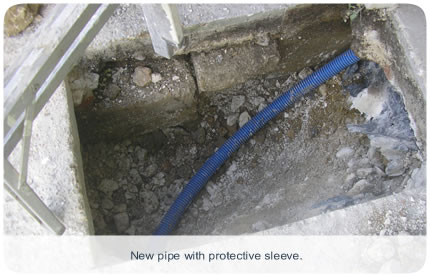
The result is a quick, tidy installation, with peace of mind backed up by our 15 year guarantee.
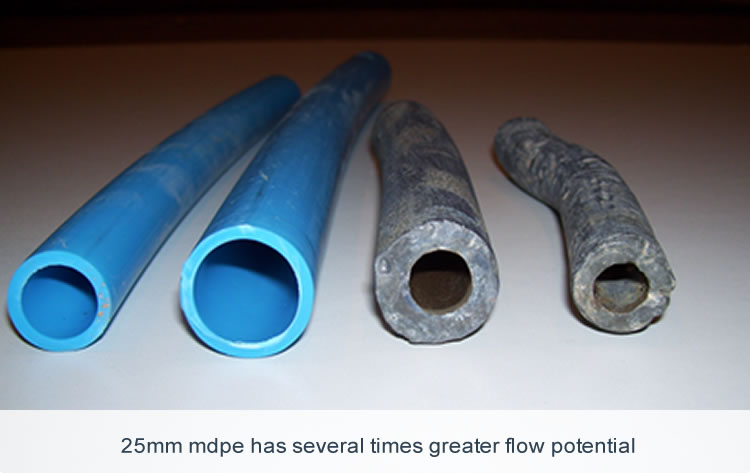
Lead pipes can cause serious long term health issues and the smaller bore often results in poor water flow.
Our engineers can replace your existing lead water pipe quickly and efficiently, from the boundary to the rising main stopcock within the property, using impact moling (see pipe replacement and moling).
We are approved by the Water Industry (WIAPS), Anglian Water, Affinity Water and we are a member of the Thames Water approved Plumbers Scheme.
We install a new MDPE (blue poly) water replacement supply pipe, to comply with your local Water Authority regulations, and the disruption to your supply will typically be only 20 – 40 mins.
Problems with Lead
Health Issues
The Governments Drinking Water Inspectorate (consumer/advice leaflets) warns that lead is toxic and can build up in the body, particularly in young children and pregnant women. It interferes with the metabolism of calcium and Vitamin D, affects the central nervous system, can effect mental well-being and produce behavioural problems.
The World Health Organisation (WHO) also lists lead as a possible human carcinogen – (Guidelines for Drinking-Water Quality/ Chemical Facts sheets/ toxological review) and states that most lead in water arises from plumbing, and the remedy is to remove plumbing and fittings containing lead.
Poor Water Supply
As lead is a soft metal, the pipe wall is thicker to withstand the pressure. This usually results in the internal bore being smaller and restricted. In turn, this limits the volume of water , so when several appliances are run at the same time, the flow noticeably fades away.

